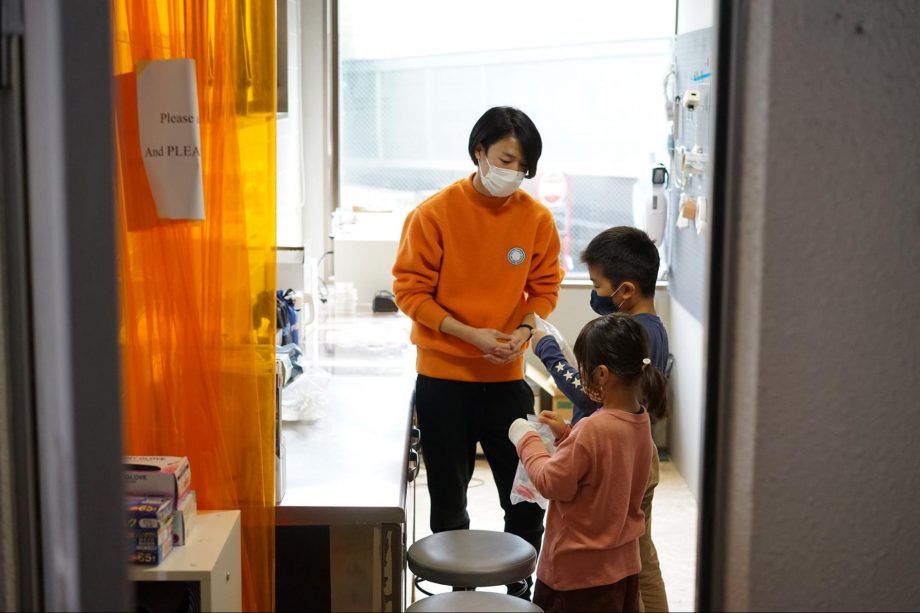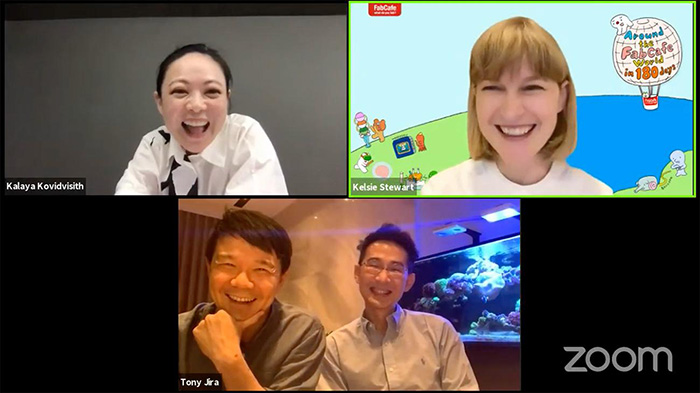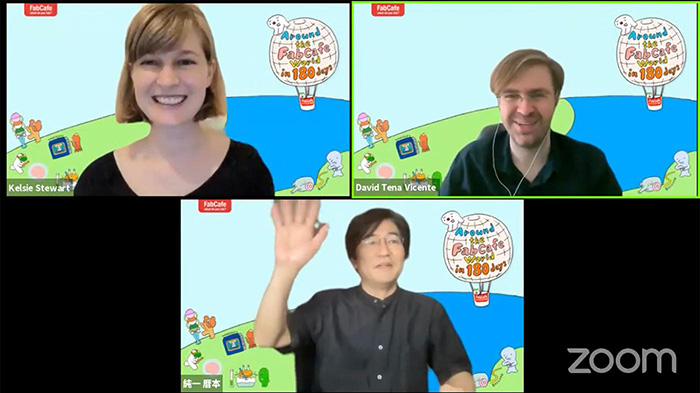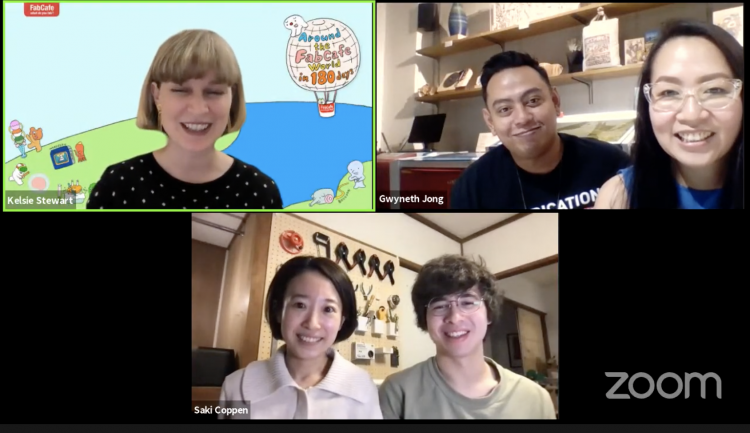Column
April 27, 2022
David Willoughby
Freelance Writer
FabCafe Mexico City is the latest addition to the global network and builds on the idea that different FabCafes should offer different responses to the global fab movement. This will be the first FabCafe to focus on mixed reality experiments, including bio art.
As part of the Around the FabCafe World in 180 Days event series, we heard from the latest FabCafe founders Tania Aedo and Federico Hemmer, along with guests BioClub Tokyo founder Georg Tremmel and bioelectronic artist Ana Laura Cantera. Together, they’ll help us understand what bio art seeks to achieve, why it matters, and why we need more citizen science in our communities. First, let’s meet the founders.
FabCafe Mexico City is founded and managed by Tania and Federico, who are also the duo behind Membrana Lab, a facility for extended reality (XR) and mixed reality (MR) experiments using biotechnology. The new FabCafe shares the same space as Membrana Lab on the volcanic slopes of the city’s southern borough of Magdalena Contreras and promises to open up bio and media art to a wider range of participants.

Tania and Federico point to the enormous potential of bio and media art to engage with complex, critical issues concerning our present existence and possible futures. They contrast this with the traditional role of the arts as merely providing validation or celebration of scientific achievements. They also use the term “techno patriarchy” to describe the current global economic system in which various business models compete for supremacy as though in a video game with the Earth as mere scenery.
The duo see their work as a continuation of historical inquiry into the nature of life itself. They cite the work of early 20th century Mexican biologist Alfonso Luis Herrera, whose research into protoplasm and protocells showed how organic and inorganic materials might combine to create a new mixed reality of life and non-life. As far-fetched as it might seem, such combinations may already be happening in our sewer systems.
Tania and Federico are highly conscious of the ethical questions raised by their work. Before creating any kind of molecular art, they map out its life cycle and decide how it will end. Federico shows us some experiments they’ve conducted using protocells that exist in a semi-living state. These cells exhibit behaviours similar to living cells, but lack the full spectrum of an animal cell. Nevertheless, they deserve the same ethical considerations as plants or pets.

Marcos, a Brazilian engineer, designs bottom-up workshops with Tania and Federico in which they experiment using materials sourced from local markets.
Georg is the co-founder of BioClub Tokyo, a citizen science community and biohacker space, located and hosted by FabCafe Tokyo. Born in Austria, Georg studied Biology, Informatics and Media Art in Vienna and Interaction Design at the RCA in London, he also worked as a Researcher in the Lab of DNA Information Analysis at the University of Tokyo. He is deeply interested in modified life and how these modifications are changing and challenging our moral, ethical and societal values.
As an introduction to some of the ethical issues around synthetic life, Georg discusses a project called Common Flowers / Flower Commons, which was based on the genetically modified blue flowers created by Japanese company Suntory. While perfectly legal, the flowers were introduced without public consultation or demand. This raises some important questions about ownership of life and our ability to recognise or resist modification: another art project Common Flowers / White Out removes the blues gene with CRISPR and restores the flower to its original colour – but at the same time this further modification turns the flower an official GMO again.

Common Flowers / Flower Commons asks important questions about the meaning of synthetic life.
There’s a famous graphical representation called “Types of Futures” which dates from a 1993 WHO report and has since been reproduced in countless design fields. It shows a widening funnel of possible, probable and preferable futures. Georg sees the value of bio artists as reintroducing “wildcard” futures into speculative design.
Georg believes a bio lab is a natural extension of a maker space like FabCafe. He quotes the net artist Heath Bunting: “DNA is the place where the symbolic and the real meet.” Bunting said this in 2002, when the human genome project was nearing completion and the hype cycle around DNA was at its peak. Now, we can not only read but also write DNA, making it a medium in its own right. Yet public debate around the ethical issues has since fallen away. Bio clubs are one way to bring these back into the public realm.

A typical diagram of speculative futures along with the original WHO diagram showing possible health futures.
Georg then explains how a chance meeting with Loftwork founder Chiaki Hayashi led to the creation of BioClub Tokyo. Located in the MTRL space above FabCafe Tokyo, the lab hosts open-access workshops and programmes such as BioHack Academy, providing a base for the bio community in Japan. Spaces like BioClub operate at the intersection of science, art, hobbyism and activism, and are slowly bringing bio art and biotechnology from the fringes of society to the mainstream.
-

Commonalities between the Fab and Bio movements.
-

Bottom-up Bio activities have historically applied Fab methods to make DIY tools for hands-on experiments.

Our final speaker is a bioelectronic artist whose work engages fungi, bacteria and other cellular life in forms of dialogue and co-creation. She has worked with bacteria, for example, to make bricks that light up with the addition of organic waste to microbial fuel cells.
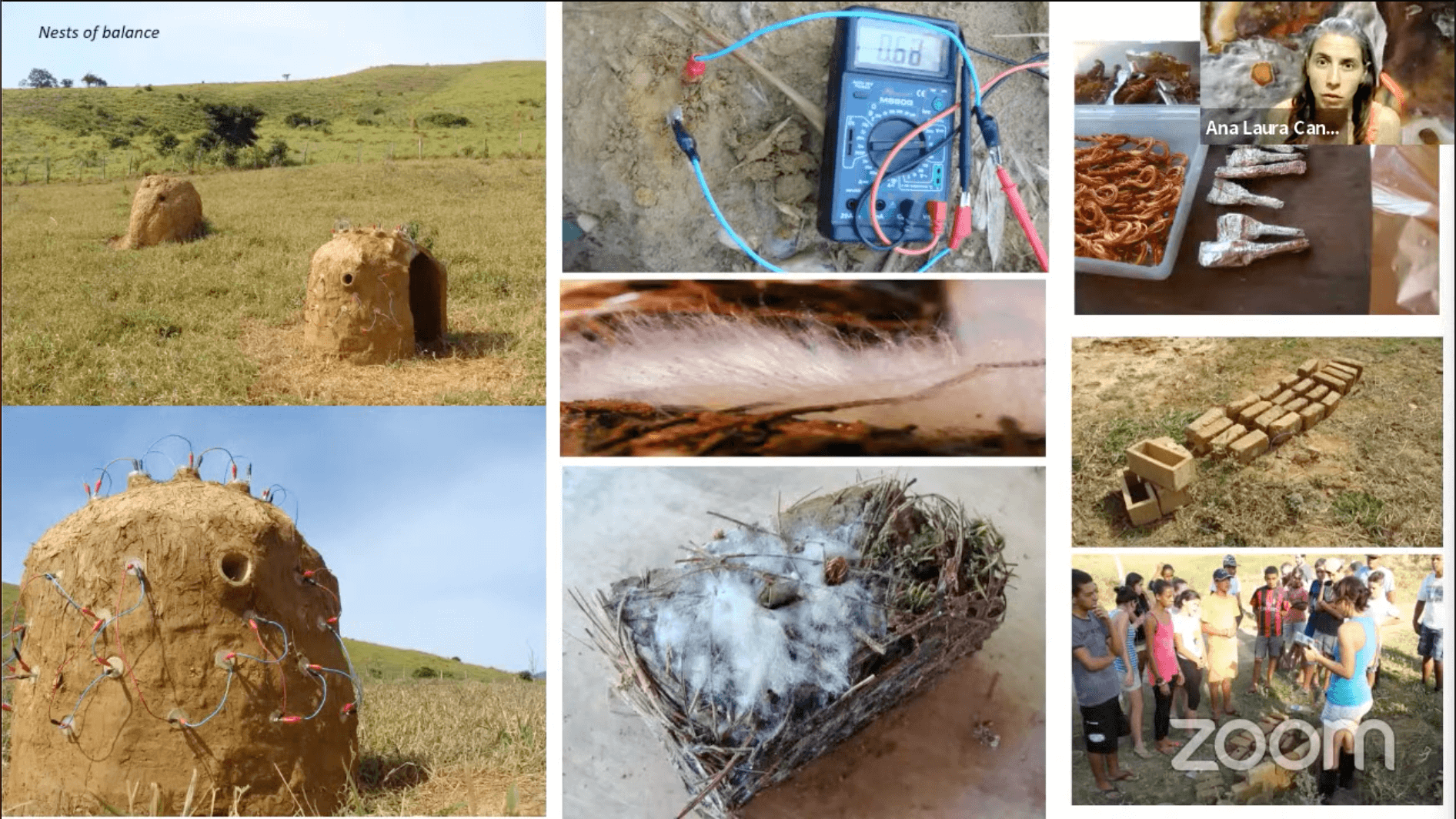
Ana Laura sees her work as a “non-anthropocentric” practice, meaning that non-human beings are an important participant along with humans, matter, science and history. By eliminating the dominant role played by human actors, her practice calls into question the role of the artist in creation and the relationship of technology to nature.

Her biomachinery builds on principles like the famous “zombie ant” phenomenon in which fungal cells invade a host species and control its behaviour. She has shown that mushrooms can manipulate the actions of a robot, which in turn might one day be used in construction. This opens up the possibility of cellular organisms operating human-made technology, in a reversal of the usual role of technology in overriding or controlling nature.
Ana Laura talks us through several other projects that show the diverse range of her thinking. Her work provides a clear sense of the boundaries of science and art. If biological science is mainly about expanding knowledge, bio art is fundamentally about exploring possibility.

Ana Laura: It’s always difficult to define bio art. But from a Latin American point of view, I would say it’s a field in which you can create together with living beings and use technology to communicate with other species.
Federico: Yes, bio art is a way to rebuild our sense of agency as humans to co-create between species, either human or non-human.
Tania: Biology seems to be already mapped, but it can still produce paradigm shifts like the discovery of microorganisms living inside us. There are some fascinating findings about our relationship with our microbiome. Experimentation by artists puts this into an arena where we can ask questions and decide what kind of future we want, because some of these microorganisms are already subject to extinction.
Georg: The idea of mapping or mathematising life is very interesting. But as well as being described, life can actually be inscribed. You are also life, which means that either everything is bio art or nothing is bio art.
Ana Laura: Bio art is a very specific field and people aren’t used to it. It’s very important to communicate in a way that they can understand, otherwise we will be a community of artists only.
Georg: It’s also very important from a biosafety and biosecurity point of view. Not too long ago, governments, especially in the US, were suspicious about home biology. DIY bio labs have the potential to create harmful substances, so it’s important to be open and transparent and show that we are not bad actors.
Federico: It starts with recognising our vulnerability and that our activities actually empower our community. We did a biomaterials workshop with Ana Laura, for example, which helped us to trace our local structure and notice how each plant that surrounds us is an agent towards our communal non-vulnerability.
Tania: Art and science are about the sharing of knowledge. For example, an artist like Ana Laura will finish a piece and then immediately have workshops to share it with people. When you see all the potential in art, you want to put that out in communities.
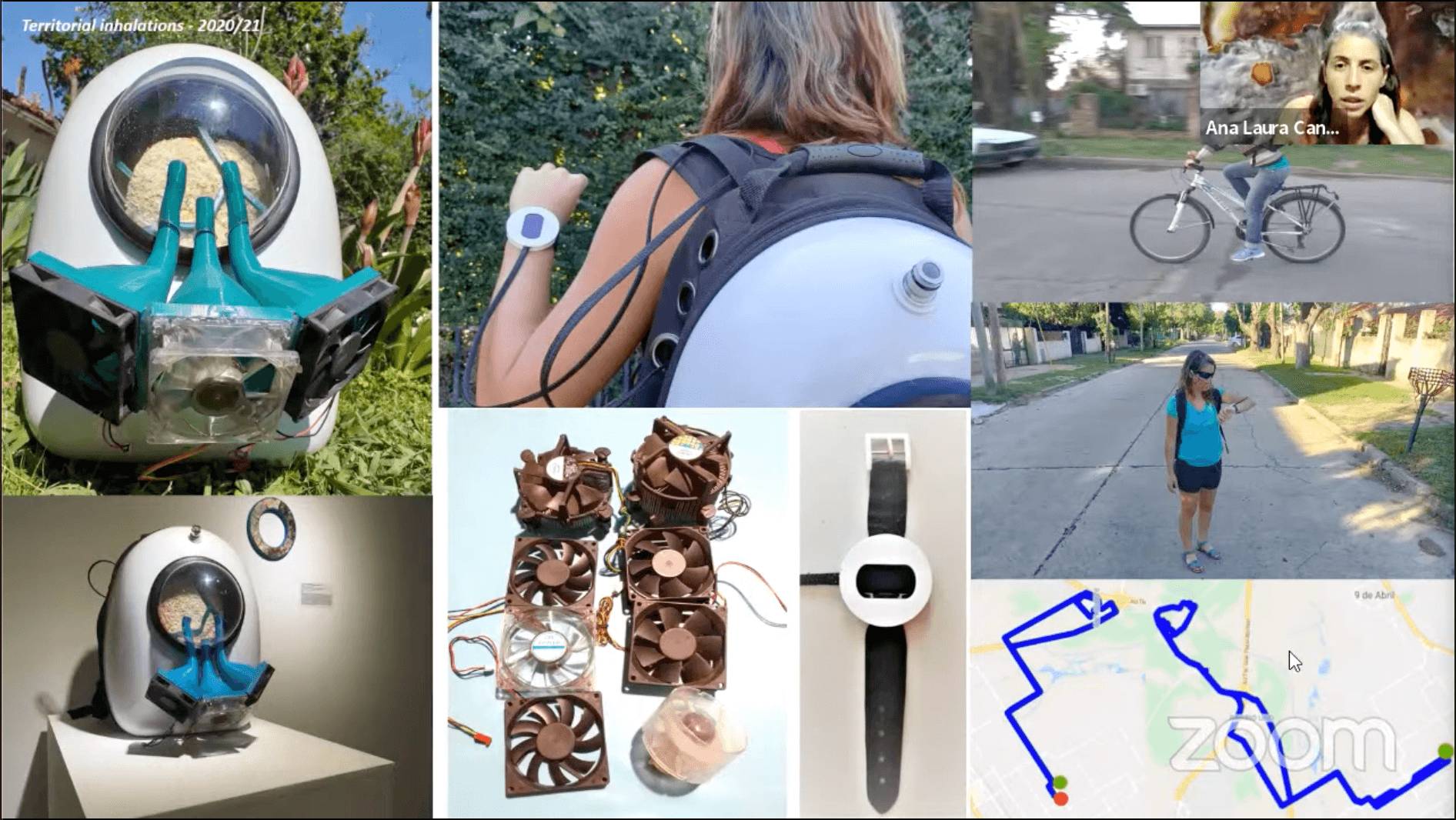
Kelsie: Some audience members who might not have access to a bio lab are asking what they can do as a beginner at home or in their studio.
Georg: If you want to start at home, you don’t need a full lab setup. You could maybe get some petri dishes, some ethanol, and a lab flame, which is a little candle that creates a sterile environment. You can basically get started for no money.
Federico: You don’t need expensive equipment, but you have to get involved in knowledge about materials. Some of our alchemical experiments are made with things like sodium silicate, which can be extracted from items you can buy at the pet shop. Or you can go out into your environment and notice how you can get plants or other kinds of matter and join them to make other materialities. Patience and co-creation are good starting points.
Tania: Work with the materials you’ve got locally. Bio art is more like a laboratory for questions. The questions are more important and interesting than the tools.
Ana Laura: I think the first lab is the kitchen. We can do a lot of things there, and the knowledge is available online. The most important thing in bio art is what you are trying to say with the materials. A laboratory is just another tool.
As well as FabCafe Mexico City and BioClub Tokyo, similar bio activities are starting up at other FabCafes worldwide. These are open to everyone, so get involved! .
We also recently published a separate interview with Tania and Federico in which they discuss their vision for FabCafe Mexico City.

-
FabCafe Bangkok opened in 2015, and its co-founder, Kalaya Kovidisith, has been creating various projects with her experience in architecture, design computation, and her creative planning skills. At this event, she talked about how materials became the future of digital fabrication together with Pattanapong Ranurak and Tanet Jirasavekdilok from Divana Wellness Co., LTD
-
In Zamora, the third most aged city in Europe, FabCafe Barcelona is now developing IoT and robots to support the elderly. In a future society where the value of living a more fulfilling life is more important than just convenience and efficiency, what will the relationship between robots, AI, XR, and other technologies, people, and cities look like? He discussed together with Prof. Junichi Rekimoto, the director of Sony CSL Kyoto Laboratory.
-
The projects and workshops that FabCafe Kuala Lumpur (FabCafe KL) has developed so far are all full of a playful spirit. We discussed the role of play and playfulness in design and creativity with the two members of Playfool, a design unit that also develops activities with play as a keyword.
We talk about how playfulness is necessary for adults as well, in order to naturally involve people and face the essence of things.
-
David Willoughby
Freelance Writer
David thinks and writes about sustainability, technology and culture, and has reported on many of our hackathons, talks and other events. He also works with Japanese companies to help tell their stories to the world.
David thinks and writes about sustainability, technology and culture, and has reported on many of our hackathons, talks and other events. He also works with Japanese companies to help tell their stories to the world.



